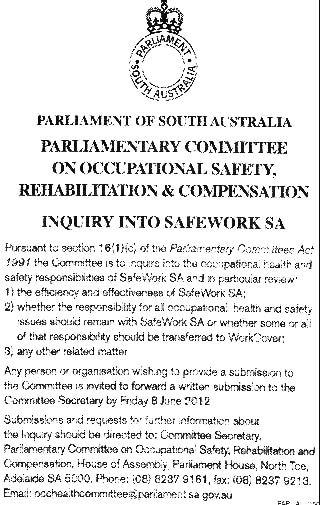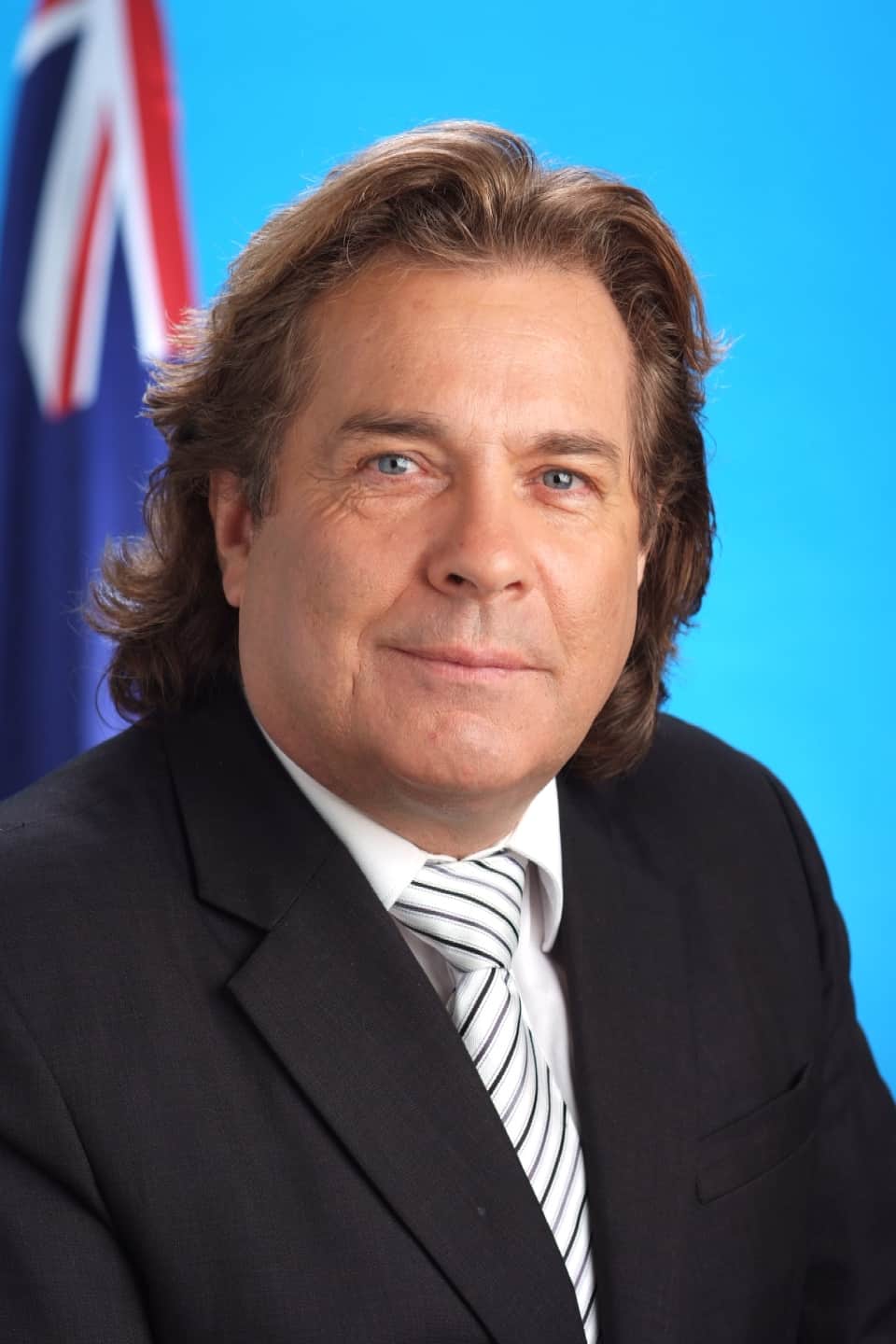 On 19 May 2012, South Australia’s Parliamentary Committee on Occupational Safety, Rehabilitation and Compensation (OSRC) announced in the Adelaide Advertiser and inquiry into the operations of SafeWorkSA. SafetyAtWorkBlog has been told that the inquiry was self-initiated by the committee as a result of no one particular reason. The Minister for Industrial Relations was apparently unaware of the inquiry and nor was SafeWorkSA.
On 19 May 2012, South Australia’s Parliamentary Committee on Occupational Safety, Rehabilitation and Compensation (OSRC) announced in the Adelaide Advertiser and inquiry into the operations of SafeWorkSA. SafetyAtWorkBlog has been told that the inquiry was self-initiated by the committee as a result of no one particular reason. The Minister for Industrial Relations was apparently unaware of the inquiry and nor was SafeWorkSA.
As the passing of Work Health and Safety laws stall in the Parliament, the politics of safety in South Australia is about to get even messier.
The notification from the OSRC committee lists the inquiry’s terms of reference: Continue reading “South Australia’s politicians prepare to grill the OHS regulator, SafeWorkSA”




